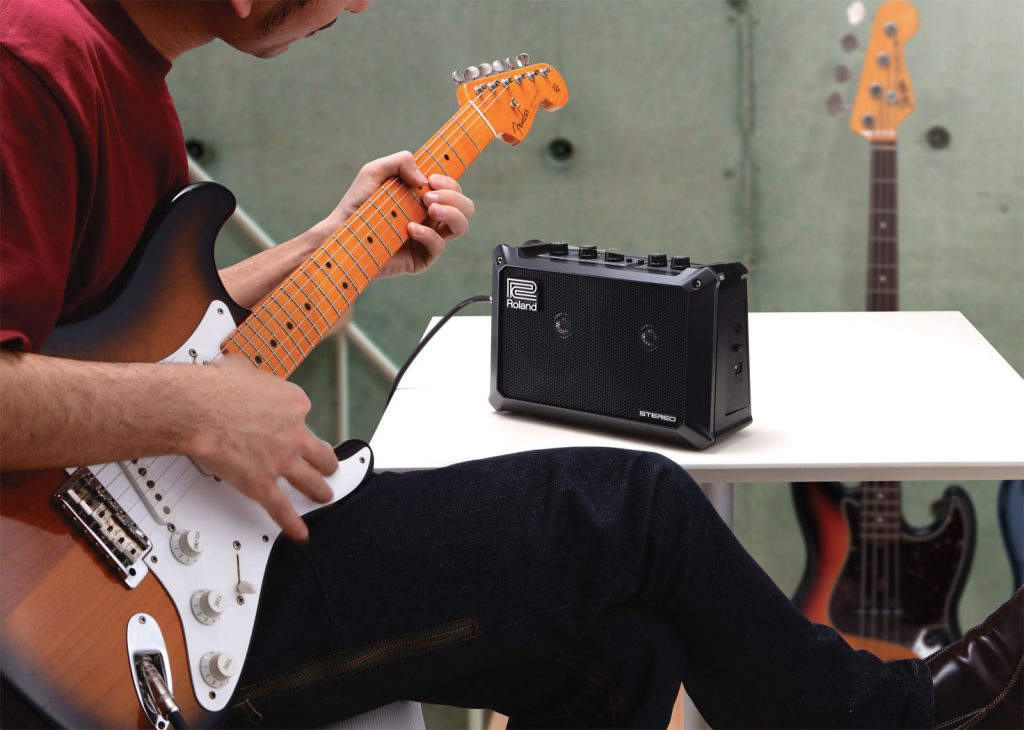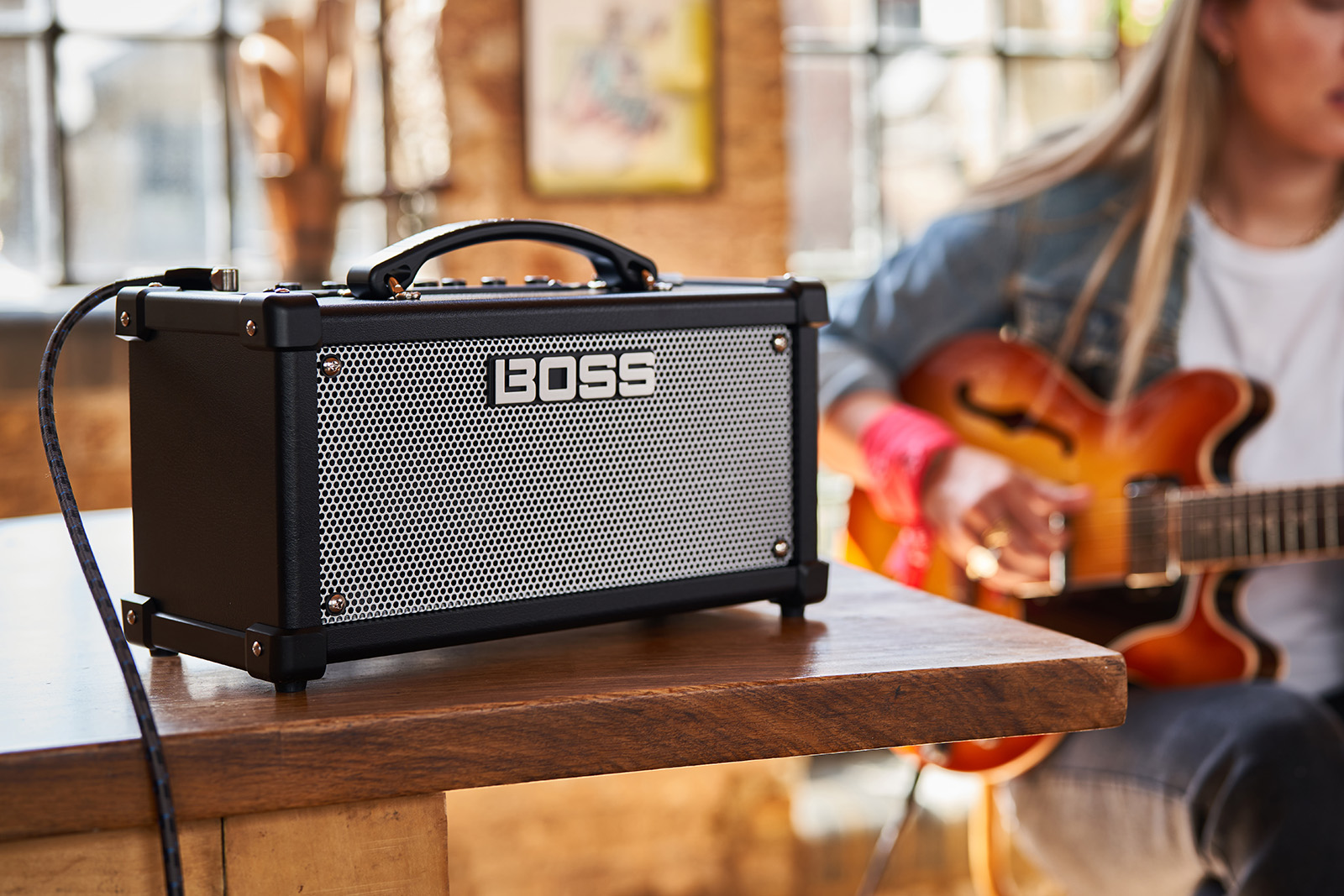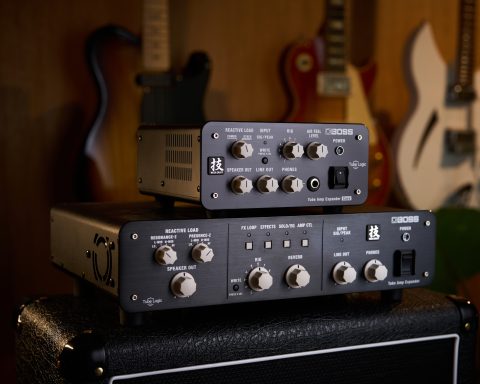Right now, on a street corner, at a rehearsal space, or in a backstage dressing room, someone is using a CUBE amp. Modern musicians pinball between gigs and demand an amp that keeps up. They love the legendary CUBE series for its unrivaled portability and how it punches above its weight in tone and features. Still, the CUBE success story—more than three million sold—didn’t happen overnight. The series has a long and decorated journey. Along the way, it shifted from a cult hero to a specialist tool with portability, features, and versatility. Here’s how the history of the CUBE defined what it is today: the world’s favorite portable amp series.

Introducing the CUBE
Rewind to the late ’70s. Against a backdrop of tube-driven classic rock, the notion of a compact, portable, solid-state Japanese combo was bold. Yet when the first CUBE-40 launched in 1978, it proved an instant game changer. Finished in unmistakable burnt orange, the inaugural CUBE-40 already had in place the benefits that bring modern players to the series. The first CUBE packed stellar tone and features into a chassis small enough to sling on your shoulder. While the CUBE-40 boasted a punchy 10″ speaker, 3-band EQ, onboard reverb, and 40-watt output, it was practically hand luggage.
Meanwhile, belying that lightweight format was a tone that pricked up professional ears. It was a testament to the CUBE-40’s quality that Ozzy Osbourne’s late sideman, Randy Rhoads, used the amp for backstage warmups. “Randy loved the sound of that amp,” remembers Osbourne’s bassist of the period, Rudy Sarzo. “What he wanted was a real clean distorted tone. And the CUBE-40 came very, very close to the rig that he was using on stage.”
"Randy loved the sound of that amp. The CUBE-40 came very, very close to the rig that he was using on stage." -Rudy Sarzo
More than a Guitar Amp
The CUBE-40 was a profound statement of intent, but it was only the beginning. While the CUBE series will always be most associated with guitar players, the line would soon serve the other musicians on stage. The first CUBE-60 bass amp emerged in 1979. Since then, delivering that same CUBE performance to bassists has remained a priority. This commitment to accessible bass tone has recently resulted in an exciting development. The DUAL CUBE BASS LX, with its multiple preamps, FX, and twin speakers, is a powerful new addition to the CUBE line.
Technology and Tone
CUBE designers have ensured the series has evolved alongside the music scene. To that end, these amps have never rested on their technological laurels. Stick a pin in the timeline, and you’ll find countless quantum leaps. Composite Object Sound Modeling (COSM) debuted in high-end Roland gear of the ’90s. 2013’s Micro CUBE GX utilized the same technology. Ex-Eagles legend Don Felder even used the amp to track the solo for “You Don’t Have Me” when his boutique gear couldn’t compete.
The i-CUBE Link on the GX range allowed hi-fi quality playback and jamming. With the smartphone, the CUBE Jam app rose to prominence, helping developing players loop and learn tricky solo sections. As an added benefit, songwriters could record their licks onto a backing track and manipulate the results.
"I loaded the song into the CUBE JAM app, slowed it down to 70%, and was able to pick out the nuances I hadn't heard before." -Nita Strauss


A Pro Choice
“I had to learn two songs on very short notice,” says guitarist Nita Strauss (Alice Cooper, Demi Lovato). “When I got to the studio, I plugged my headphones into my phone, and there were some chords and subtleties I hadn’t heard in my car speakers. Then I realized I had the CUBE JAM app on my phone.” Strauss finds the app’s features invaluable. “I loaded the song into the app, slowed it down to 70%, and was able to pick out the nuances I hadn’t heard before.”
Global Favorite
Always committed to supporting the shifting needs of modern musicians, the CUBE series has a reputation for shedding its skin. If a guiding philosophy flows through the modern CUBE range, it’s that players on the move need unmatched portability from their amps. CUBE amps almost universally offer the choice between mains and battery power.
Take the Mobile CUBE, for example. With inputs for mic, keys, guitar, and MP3 backing tracks, the lightweight amp can serve as a singer-songwriter’s entire rig. Walk through any town center, and you’ll spot a CUBE. The amp is synonymous with set-up-and-play performance. The iconic CUBE Street launched in 2007 with head-turning twin speakers, built-in amp models, onboard effects, and dual digital power amps.
"Walk through any town center, and you'll spot a CUBE. The amp is synonymous with set-up-and-play performance."
The Busker’s Best Friend
At the same time, this busking must-have has constantly evolved. The CUBE Street EX raised the model’s power and sound-shaping capabilities. Most recently, the CUBE Street II added two independently-shaped channels (Mic/Instrument and Guitar/Mic), an onboard harmonizer and looper, plus a commanding 10-watts through twin 6.5-inch speakers.
Meanwhile, running off the wildly successful Micro CUBE series’ momentum comes the DUAL CUBE LX and DUAL CUBE BASS LX. The pair might be the most portable offerings to date. They pack features like multi-effects and preamp simulations into a twin-speaker chassis little bigger than a shoebox.

"The road-grade construction standards subject CUBE amps to extreme heat, excessive vibration, repeated dropping, handle strength, and thousands of button presses."


Tough Build
Of course, modern musicians operate on the rain-lashed streets and in gritty rehearsal spaces. These are not places for the fainthearted. Another central philosophy of the CUBE series is its famously rugged build quality. Depending on the model, a CUBE amp will feature tough backboards, perforated metal grilles for speaker protection, and corner protectors running the length of the case. They boast metal shafts and housings on the dashboard controls that let you twist up a tone in the heat of the gig and never worry about the dial failing.
The road-grade construction standards subject CUBE amps to extreme heat, excessive vibration, repeated dropping, handle strength, and thousands of button presses. The units only get waved through when they pass every last test.
"The CUBE series has the uncanny ability to keep pace with the changing needs of musicians, offering a choice of models covering every conceivable gig."
A CUBE for Every Player
The needs of musicians have changed beyond recognition since 1978. Perhaps the era-spanning appeal of the CUBE comes down to the fact that this amp series has grown with us. Portfolio players pivot from sessions and gigs to lessons and jams in today’s fast-paced industry. The CUBE series has the uncanny ability to keep pace, offering a choice of models covering every conceivable gig. Here’s to the next half-century of thinking outside the box.

Check out all the latest models in the CUBE Amp Series here.







